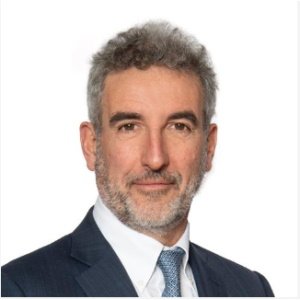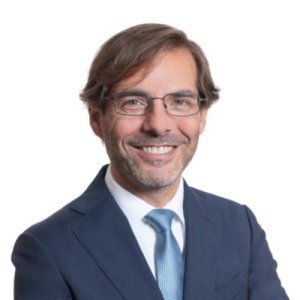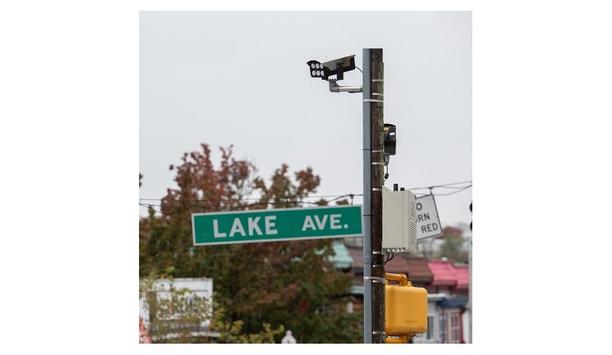Leonardo - Experts & Thought Leaders
Latest Leonardo news & announcements
The user may know that fixed licence plate reader technology (LPR) is one of the most powerful security tools available for protecting buildings and perimeters of geographical areas. Best practices for ELSAG® Fixed Plate Hunter LPR systems include: College, university, and school campuses Airports Casinos Manufacturing facilities Houses of worship Transportation depots Utility infrastructure Municipal buildings Military campuses Ports and border stations Fixed plate readers are also proving to be fundamental components of public safety missions designed to protect people in high-pedestrian areas, or those targeted by traffickers and predators. This case study offers three real-life instances of fixed or semi-fixed deployments that not only keep buildings and perimeters secure, but also people. Identifying suspect vehicle The ELSAG Fixed Plate Hunter ALPR in action fixed ELSAG ALPR cameras are attached to infrastructure like a utility pole or sign gantry. Fixed cameras scan plates of passing vehicles, capturing licence plate numbers, date/time stamps and GPS locations. The infrared camera captures b/w images of each plate and a colour camera captures overview images of each vehicle. A computer reads the plate characters and compares them with a hot list. Plates that match a white or hot list trigger instant alerts to security officials. ELSAG Fixed Plate Hunter ALPR Performance: Cameras read licence plates, day or night, in any weather. Plates are processed at up to 150 mph (241 kph) passing speeds, from over 100 feet away. Plates are recognised using specially designed protocols for each jurisdiction in which the systems are deployed ELSAG Fixed Plate Hunter ALPR Performance. Alerts are sent to officials, command centres and other patrol cars instantaneously, upon identifying a suspect vehicle. Captured data includes date/time stamps, GPS coordinates and photo of the licence plate. Fixed systems can capture the speed of passing vehicles. Hot list updates are wirelessly received and transmitted. Keeping people safer Duck, NC is a coastal community located in Dare County on the Outer Banks of North Carolina There are flexible LPR technologies available that allows the user to address any law enforcement and security mission or challenge that involves vehicles with licence plates. Here are three examples of LPR programs using Leonardo systems that were started for routine purposes, then expanded to help keep people safer and more secure. Duck, NC is a coastal community located in Dare County on the Outer Banks of North Carolina. It hosts about 20,000 people during the summer months. In 2015 The Chief of Police began an LPR program with two fixed cameras to help manage ‘burglary season’ on the island. Cameras read plates as vehicles enter and leave town. Almost immediately two arrests were made in separate cases of burglars who had been stealing from area homes for over a decade. Identifying stolen vehicles The Duck, NC program also identified stolen vehicles, located missing persons, and exposed narcotic activities, leading to the expansion of their LPR network. Additional fixed cameras protect the 30 miles from Manns Harbor to the Wright Memorial Bridge. Additional fixed cameras protect the 30 miles from Manns Harbor to the Wright Memorial Bridge The Dare County LPR program is now instrumental in keeping track of residents who adhere to hurricane evacuations and any who choose to stay on the island. LPR traffic tallies and licence plate numbers give officials an estimate of people who may need help during the crisis, and an address. “Our LPR systems provided us a starting point to begin and end any type of situation or investigation.” John Cueto, Retired Chief of Police, Duck, NC. Pedestrian-heavy area In 2015, BA Tránsito, the road traffic authority in Buenos Aires, used a network of fixed LPR cameras to support an initiative designed to protect the pedestrian-heavy area of the oldest part of the capital city known as the Autonomous City of Buenos Aires. Only taxi cabs, government officials and other select vehicles are allowed to use the streets there. If any LPR camera reads the licence plate of a vehicle without a permit, they are mailed a ticket. The success of the original LPR program led to a 2017 expansion to relieve traffic congestion in the area immediately surrounding the Autonomous City. This busy metropolitan area, the ‘centre city ring,’ has multi-lane roads in several directions, dangerously busy with vehicle activity. Cutting down daily traffic To encourage compliance, every licence plate number read is prominently displayed on digital signs BA Tránsito cut down daily traffic by half using fixed LPR systems. Licence plates ending with odd numbers can enter the centre city ring on Mondays, Wednesdays, and Fridays. Plates ending with even numbers have access on Tuesdays, Thursdays and Fridays. Police wait nearby to stop unauthorised vehicles. To encourage compliance, every licence plate number read is prominently displayed on digital signs for all other drivers to see. The NTSCIU covers eight counties, looking for criminals who use interstates and highways to smuggle illicit contraband. In 2017 they started an LPR program with two mobile LPR units to read plates as officers patrolled. They expanded their LPR network in 2018 with the addition of a LPR radar trailer housing two fixed cameras to serve as a semi-fixed system that could be easily moved to different places along highways, as needed. LPR radar trailers In 2018, they purchased an additional trailer to use along strategic routes and support requests from other agencies within the NTSCIU to help curtail crimes such as burglaries. While there are countless headlines about NTSCIU’s removal of illicit drugs from Texas highways and seizures of drug money and other contraband, aided by LPR technology, one of their most important cases was the recovery of a child abducted in California. As described by an NTSCIU supervisor, that case alone paid for their entire investment in LPR technology As described by an NTSCIU supervisor, that case alone paid for their entire investment in LPR technology. In 2018, the NTSCIU learned of an Outlaw Motorcycle Gang rally in their jurisdiction. They deployed LPR radar trailers around the event site to gather data (licence plate number, photos of each plate on a bike or vehicle, date and time stamps, and trailer identifier). Fixed LPR technology Should events occur during the rally that would require investigating, law enforcement could analyse the data for information to help resolve the issue. Agencies of every size will benefit from deploying fixed LPR technology—to aid security of places and people. There are lease options and grants available to help with funding, and Leonardo even has a lower-cost video camera LPR solution available now. So, get your agency outfitted with this 21st-century technology that is changing law enforcement best practices by increasing capacity, productivity and facilitating creative ways to address any issue that involves a licence plate.
Themed “Airport Operations for Tomorrow”, inter airport Southeast Asia 2025 (IASEA) curated a lineup of conference sessions and the latest innovations to drive conversations on what a sustainable tomorrow looks like for Asia’s airport operations and ground handling industry. From 25-27 March 2025, the 8th edition of IASEA is expected to gather over 4,000 attendees, 150 notable global brands and some 50 industry experts as speakers at the iconic Marina Bay Sands, Singapore. IASEA 2025 Conference–Mastermind keynotes The session will discuss keys that improve operational efficiencies and lay the foundation for resilient Setting the stage for this conference on day 1 (25 March) is the fireside chat titled Reshaping Global Airport Operations by Patrick Ky, CEO, International Centre for Aviation Innovation (ICAI), an industry pioneer with nearly three decades worth of aviation experience. Moderated by Glory Wee, Senior Director, Aviation Development Group, Civil Aviation Authority Singapore (CAAS), the session will discuss solutions that improve operational efficiencies and lay the foundation for resilient and future-proof airports. Next-generation air navigation services “Globally, Asia Pacific takes the lead as the region with 60% of the total number of airport projects, and the region’s carriers handled 31 million international passengers, which was a 19.8% increase in November 2024 compared to November 2023. Recognising the need to address ground and airspace capacity constraints and manpower shortages, while keeping up with increasing passenger footfall in the region, the International Centre for Aviation Innovation was established in Singapore,” said Patrick Ky, CEO, International Centre for Aviation Innovation (ICAI). “ICAI focuses on research and development projects for next-generation air navigation services, automated and smart airports, and unmanned aviation systems and sustainable aviation. At the upcoming IASEA 2025, I’m excited to share insights into new innovations that will be tested in Singapore before being deployed globally.” Skytrax’s World Top Airport List 2024 Keynote sessions led by two of the top 5 airports according to Skytrax’s World Top Airport List 2024 This will be followed by keynote sessions led by two of the top 5 airports according to Skytrax’s World Top Airport List 2024. The first keynote, Airports of The Next Decade & Beyond with Shinichiro Motomiya, General Manager, Narita International Airport Corporation, will provide insights into the master plan of Narita International Airport – a case study of the airport of the future, and Airport in Brief: Incheon Airport with Soonil Hwang, Deputy Director of Fast Travel Team, Incheon International Airport Corporation, will cover a deep dive into the airport’s Digital Transformation Project. New Narita Airport expansion project Shinichiro Motomiya, General Manager, Narita International Airport Corporation, shared, “To ensure that airports can keep up with this surging demand in air traffic today, it’s become paramount for the industry to accelerate conversations on what will make airports sustainable, improve operational resilience and passenger experience. Take the ‘New Narita Airport’ expansion project as a case in point, which we will share about during the keynote session." "The airport development project for the 2030s is looking at consolidating terminals and building a new cargo area to allow for the expected increase of passenger capacity from 57 to 75 million and cargo capacity from 2.4 to 3.5 million tons at Narita International Airport.” Use of Artificial Intelligence technologies Soonil Hwang, Deputy Director of the Fast Travel Team, Incheon International Airport Corporation commented, “We should not shun away from the use of Artificial Intelligence technologies, especially in the aviation industry. At Incheon International Airport, we believe that technology will strike a fine balance between passenger experience and operational efficiency." "Hence, we’ve analysed customer demands and drawn a Persona Journey Map to design solutions around it. As we complete Phase 4 of the transformation of Incheon International Airport, it is my pleasure to share at the upcoming IASEA how we’ve identified values such as ‘Convenient Journey’ or ‘Time’ and utilised them to elevate the customer experience.” Challenges in ground management Minh will cover the solutions needed to address challenges in ground management The morning of the opening day will also see Nguyen Dang Minh, Head of Airport Operations Department, Airports Corporation of Vietnam (ACV) spearhead the next keynote, Vietnam Airport Development Masterplan 2030. Vietnam stands as a pioneer in the aviation landscape, aiming to expand its airport network to 30 airports by 2030 and a long-term vision extending to 2050 that includes upgrades to increase annual passenger capacity by over 80%. As new airports are being built and existing ones upgraded, Minh will cover the solutions needed to address challenges in ground management, security, and resource allocation that will enable airport operations to evolve alongside Vietnam’s expanding aviation network. How transformative technology, greener practices Day 2 of the conference will open with the keynote Global Action Plan for the Prevention of Runway Incursion. With safety as a top priority for the aviation industry, and runway incursions as one of the top five high-risk categories of aviation risks, the session will be led by Mitch Fox, Director, Asia Pacific Centre for Aviation Safety, Flight Safety Foundation, who will cover recommendations from the Global Action Plan for the Prevention of Runway Incursions (GAPRI) that go beyond simple regulatory compliance. Aside from safety, efficiency and sustainability are the next priorities to drive airports of tomorrow. Brad Moore, CEO, APAC, Swissport International AG, will lead the next keynote Redefining Ground Support Excellence in Asia Pacific to examine how transformative technology, greener practices, and strategic innovation are unlocking new opportunities for ground handling – a critical backbone of the aviation system. Aside from these mastermind keynotes, other industry experts and thought pioneers from the airport industry will join the conference, sharing their groundbreaking strategies for transforming terminal and ramp operations to address the challenges of today's demanding and rapidly changing aviation landscape. Some of the conference highlights Using Data Analytics to Optimise Airport Operations Rethinking Passenger Flow: Unravelling the Knot of Terminal Congestion Transforming Baggage Handling: Best Practices for Modern Airports Future-Proofing Airport Security: Balancing Safety, Technology & Passenger Experience Boosting Operational Resilience: Preparing for the Unexpected State-of-the-art solutions at inter airport Southeast Asia 2025 As the reference point for the future of airports, IASEA 2025 will stand as a platform to unveil the latest aviation technologies aimed at streamlining workflows, improving sustainability and elevating operational capabilities. Automation will continue to play a pivotal role in ever-growing passenger expectations. SITA’s 2024 Baggage IT Insights reveal that 80% of airports and 66% of airlines have put touchless self-service baggage handling in place, and more investments will continue in 2025. Award-winning airport management software Aligned with this change, industry expert Smith Detection will introduce to the Asia market the SDX 10060 XDi Aligned with this transformation, industry expert Smith Detection will introduce to the Asia market the SDX 10060 XDi, a ground-breaking X-ray scanner, offering highly accurate material discrimination and substance identification based on an object’s molecular structure. Separately, biometrics and digital identity pioneer NEC will showcase its facial recognition technology, ranked the world’s most accurate in a benchmark test conducted by the U.S. National Institute of Standards and Technology in 2024. ADB Safegate Singapore, who recently clinched awards for Environmental Initiatives, Innovation, Safety, and Business Expansion at the Airport Technology Excellence Awards 2024, will present their award-winning airport management software. Other notable brands to expect on the exhibition floor Aviaco GSE, CIAS, Colibri Energy, Cobus Industries, Datalogic, ewo, FAAC, Fastcharge, FibreFENCE by Fibre Net Spa, FLEX Industries, GRP Iluminacion, Honeywell, ITW GSE, Japan Radio Co., LEONARDO, Mallaghan, Mototok, NEC, OCEM Airfield, Oshkosh AeroTech, Poltrona Frau, Roypow Technology GmbH, SICK AG, ShinMaywa, Thales, TCR, TLD Asia, Toyota Industries Corporation, TREPEL and Weihai Guangtai. All registered professionals for inter airport Southeast Asia 2025 will be granted free access to the exhibition and conference floors. For the latest information on inter airport Southeast Asia, please visit the event website, LinkedIn, or Facebook pages.
Cubbit, the first geo-distributed cloud storage enabler announced the closing of its $12.5M funding round. With this new funding, the company will enable European Service Providers and Companies to take back full independence and control over their data, infrastructures, and costs. Data security challenges More than 180 billion Terabytes of data will be produced in 2025, and 75% of this will be created and processed at the edge. This explosive growth raises data orchestration complexity, cyber-attacks, sovereignty risks, and costs. AI and media creation are compounding this out-of-control growth, which is becoming an ever-growing concern when it comes to geopolitical scenarios and the protection of sensitive data. Cubbit eradicates these challenges by enabling organisations to create, in just minutes, their own geo-distributed S3 cloud storage that can slot into any infrastructure and policy framework - from hybrid cloud to the edge. DS3 Composer Cubbit also guarantees the required data resiliency SLAs using 25/50% less disk space With its DS3 Composer, Cubbit combines a proprietary data orchestration platform, and its deep tech data fragmentation and geo-distribution technology: the result is a sovereign, hyper-resilient, flexible, and highly cost-efficient cloud storage service that protects European data. The Company summarises its approach with: “Your Cloud. Your Rules. Anywhere.” Cubbit also guarantees the required data resiliency SLAs using 25/50% less disk space and IT resources compared to traditional cloud storage, therefore minimising their cloud carbon footprint. New, returning, and individual investors The round was co-led by LocalGlobe, EMEA’s number one VC investor according to the 2023 Dealroom report, and ETF Partners, Europe’s original sustainability investor. Among the new investors joining Cubbit are also Verve Ventures, 2100 Ventures, Hydra (holding of Datalogic), Growth Engine, Eurenergia and Moonstone. Azimut Libera Impresa SGR – Azimut Digitech Fund under the advisory of FNDX, CDP Venture Capital SGR through its Fondo Evoluzione, and Primo Ventures are returning investors. Individual investors include Fabio Fregi, former Italy Country Manager of Google Cloud, and Joe Zadeh, former VP of Product at Airbnb. Technology adoption with new funding The new funding will enable Cubbit to grow CAPEX-free in Europe, initially focusing on the DACH The new funding will enable Cubbit to grow CAPEX-free in Europe, initially focusing on the DACH, and French-speaking regions, as well as the United Kingdom. The round will also further accelerate Cubbit’s technology adoption, which is rapidly growing in Europe with more than 350 business customers, and is supported by several international partnerships, including HPE, Equinix, and Exclusive Networks. Part of the funding will go towards further consolidation of the application ecosystem around Cubbit’s enabling technology to support vertical projects in various industries, including aerospace, defence, cybersecurity, healthcare, and public administration. Geo-distributed technology "Having top-tier international VCs invest in Cubbit's geo-distributed technology is a major endorsement," said Stefano Onofri, Co-CEO and Co-Founder of Cubbit. He adds, "Over the past few years, we have grown massively and closed key partnerships and agreements with international players such as Leonardo, HPE, and Equinix - now it's time to take our expansion to the next level." Cloud enabler Alessandro Cillario, Co-CEO and Co-Founder of Cubbit, said "Enterprises worldwide are facing the daunting challenge of orchestrating massive amounts of data, or they will soon. They don’t need just another cloud provider; they require a cloud enabler that allows them to implement the custom IT infrastructure strategy that they are looking for." He adds, "Organisations need to keep full control over their data to simplify their workflows and reduce costs. Cubbit is here to help them achieve what was not possible before." Double-edged sword Patrick Sheehan, Managing Partner and Founder of ETF Partners, said, "We're witnessing a double-edged sword in the tech revolution: cloud storage is powering unprecedented innovation but at a steep environmental cost. As data centres use more and more energy, their carbon footprint continues to skyrocket." Reduces cloud storage emissions Patrick Sheehan adds, "Cubbit's Composer technology responds to this immediate challenge. It is a game-changer that reduces cloud storage emissions without slowing progress." He continues, "It's not just an incremental improvement; it's a leap towards sustainable digital infrastructure. We have been very impressed by the vision of the Cubbit team and what they have already achieved and are keen to help them continue to make a profound impact." Cloud storage software Ferdinando Sigona, Partner of LocalGlobe, said, "Data generation is already one of today’s steepest exponential curves, and the generative AI wave is only poised to accelerate this further. As a result, companies of all types and sizes are facing escalating complexity and cost." Ferdinando Sigona adds, "At the same time, the geopolitical environment is driving investment into AI sovereignty, and we think that the need for control will extend down the stack, all the way to data storage. Cubbit’s cloud storage software elegantly addresses all of these needs, and we’re excited to back Stefano, Alessandro, and the whole team as they respond to the intense pull they’re experiencing from the market."
Using artificial intelligence (AI) to automate physical security systems
DownloadA modern guide to data loss prevention
Download7 proven solutions for law enforcement key control and asset management
DownloadThe truth behind 9 mobile access myths
DownloadAccess control system planning phase 2
Download







































